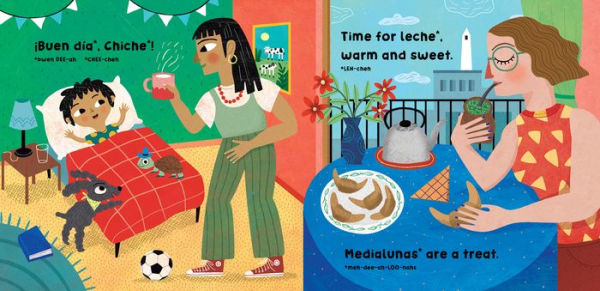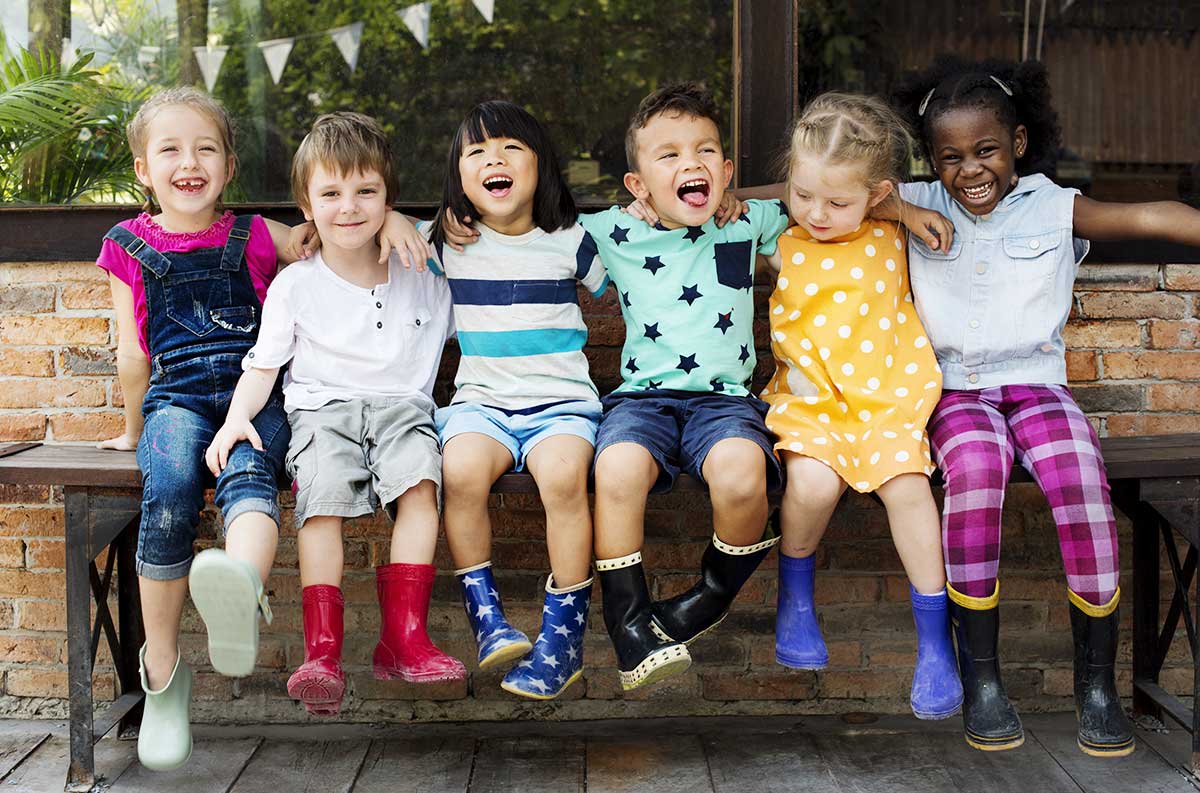
Inclusive Children's Book Teaching Guide
Our World: Argentina
What is this book about?
In this bilingual introduction to the vibrant culture of Argentina (with Spanish and English text), a diverse family enjoys a day of exploring the country's sights and sounds from morning light to city night.
Follow along as the family members snack on medialunas, count the stalls at la feria, and ride the caballito on the carousel. Although the story is set in Argentina, children from every country and culture will be able to relate to its depictions of family life.
Our World: Argentina engages young readers with rhyming text, colorful illustrations, and Spanish vocabulary words with pronunciation tips. At the end of the book, a section entitled “A Day in Argentina,” rounds out the educational experience with vignettes from the story accompanied by interesting facts about Argentinian life.
Argentinian author Aixa Pérez-Prado and illustrator Mariana Ruiz Johnson draw on their lived experiences in Argentina to create an authentic picture of modern Argentinian life as part of the Our World series for very young readers. The author—a professor at Florida International University with a PhD in social science and education—writes stories that give diverse children a chance to see their multilayered identities represented in children's literature.
Who is depicted in this book?
What early childhood themes and concepts does this book explore?
- Exploring places in a city
- English and Spanish vocabulary/phrases
- Different types of animals
- Familiar actions (nap, cuddle, dance, open, push)
How does this book support anti-bias education?
The Rainbow family in this story offers representation, as well as an opportunity to reinforce family pride and positive social identities.
Depending on how the book is shared or used—and the developmental level of the children—Our World: Argentina may be used to support the following core goal from Anti-Bias Education for Young Children and Ourselves:
Identity—Teachers will nurture each child’s construction of knowledgeable and confident personal and social identities so that children will demonstrate self-awareness, confidence, family pride, and positive social identities.
How can this book be used to meet early childhood learning standards?
For all ages
Use Our World: Argentina to meet early childhood literacy standards
For children from birth to age three
Teaching suggestion: Point out forms of play and other familiar actions as the family in this book explores the city. Follow the children’s interests and react to, point at, or name the parts of the story that they focus on.
What Illinois Early Learning Guideline does this meet for children from birth to age three?
Developmental DomainSocial-Emotional Development
Standard: Relationship with PeersChildren demonstrate the desire and develop the ability to engage and interact with other children.
Indicators for children:
- Begins to engage in parallel play, in closer proximity to other children but no interaction is attempted (7–18 months)
- Begins to engage in simple reciprocal interactions, such as rolling a ball back and forth (16–24 months)
- Demonstrates a preference for select peers (21–36) months
Teaching suggestion: Model the actions and sounds of the people, animals and vehicles depicted in the illustrations. Many of these actions and sounds, as well as common phrases, are labeled in English and Spanish.
What Illinois Early Learning Guideline does this meet for children from birth to age three?
Developmental DomainLanguage Development, Communication and Literacy
Standard: Early LiteracyChildren demonstrate interest in and comprehension of printed materials.
Indicators for children:
- Imitates gestures and sounds during activities (7–18 months)
- Repeats familiar words in a book while being read to (16–24 months)
Teaching suggestion: Encourage the children to find and name the animals featured in the book.
What Illinois Early Learning Guideline does this meet for children from birth to age three?
Developmental DomainCognitive Development
Standard: Concept DevelopmentChildren demonstrate the ability to connect pieces of information in understanding objects, ideas and relationships.
Indicators for children:
- Begins to identify characteristics of objects (e.g., “red ball”) (16 to 24 months)
- Identifies characteristics of objects and people when named, e.g. colors (21 to 36 months)
- Identifies categories, e.g., able to point out all the animals within a picture even with different types of objects represented (21 to 36 months)
For preschoolers (ages three to five)
Teaching suggestion: Encourage the children to describe what they see happening as the family spends the day together, as well as the categories and types of activities depicted.
What Illinois Early Learning and Development Standards does this meet for preschoolers?
Language Arts Standard1EUse increasingly complex phrases, sentences and vocabulary.
Benchmark 1.E.ECa:
With teacher assistance, begin to use increasingly complex sentences.
Benchmark 1.E.ECb:
Exhibit curiosity and interest in learning new words heard in conversations and books.
Benchmark 1.E.ECd:
With teacher assistance, explore word relationships to understand the concepts represented by common categories of words (e.g., food, clothing, vehicles).
Teaching suggestion: For children whose first language is Spanish, this book provides an opportunity to bridge Spanish and English literacy skills. Ask these students to share the Spanish words for objects and familiar phrases in the book. Then share the English words with them to support emergent biliteracy.
What Illinois Early Learning and Development Standards does this meet for preschoolers?
English Language Learner Home Language Development Standard29AUse the home language to attain benchmarks across all the learning areas and to build upon and develop transferable language and literacy skills.
Benchmark 29.A.ECc:
Exhibit foundational literacy skills in home language to foster transfer to English.
Teaching suggestion: Help the children understand that Argentina is a different place. Identify and discuss some of the ways that Argentina is similar to and different from their own country or neighborhood.
What Illinois Early Learning and Development Standards does this meet for preschoolers?
Social Studies Standard17AExplore environments and where people live.
Benchmark 17.A.ECa:
Locate objects and places in familiar environments.
Benchmark 17.A.ECb:
Express beginning geographic thinking.
See inside this book.

